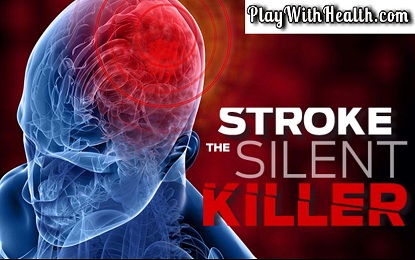Everything about Stroke – What Happens Before, During and After a Stroke
When the blood supply in the brain irritates it results in the stroke. Symptoms of a stroke are a loss or less function arm or in the leg or find difficulty in speaking. Whenever you feel symptoms like these, it means you need an emergency treatment. Without treatment, brain cells can damage quickly or die. It results in brain injury or serious disability or it can cause death too.
Click Here to Read:- Did You Know These 10 Super Foods Which Keep Kidney Healthy
Symptoms of Stroke are:-
Difficulty in speaking.
Find more difficulty in understanding or confusion, especially the very simple tasks too.
The difficulty with the muscle strength, especially on the one side of your body.
The difficulty with numbness, especially on the one side of your body.
Vision can change in one or in both eyes.
Facial droop on the one side.
A severe headache is also one of the symptoms.
Signs of a Stroke:-
F.A.S.T. Test
Meaning of F.A.S.T. Test is:-

F means Face – If one side of the face droops then it is a sign of a possible stroke.
A means Arms – If the person cannot hold both arms out it is the possible stroke sign.
S means Speech – Poor understanding or Slurring words of simple sentences. This is another possible stroke sign.
T means Time – If any of the FAST signs are found positive. Then this is time for medical emergency immediately.
F.A.S.T. test was designed in the year 1998 to help the ambulance staff in the European countries to quickly assess stroke. It takes into an account the most common symptoms of the stroke. It is designed to help the patient quickly from a stroke with very little training.
Stroke and the Brain
Did you remember the F.A.S.T. test for stroke? Meaning of T. in the F.A.S.T. is that for the longer period brain blocked the supply of blood (it happens due to a blood clot), the more risk of brain damage is possible.
Time limit to diagnose treatment for most of the patients is usually within the 3-4 hours (sometimes some health centers suggest a bit longer time). Sometimes in few patients, doctors try to use the clot-busting medicines which dissolve and restore the blood flow. Not all of the patients are qualifying for this treatment. It is because there is a risk of bleeding which is associated with this treatment. It might cause some serious problem.
Click here to read:- Did You Know These 10 Home Remedies for Psoriasis
Click here To Buy- Yeast Infection No More
Types of Stroke
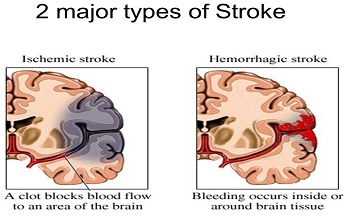
Only two types of stroke are main i.e Hemorrhagic and Ischemic. Both of the strokes are treated differently. Often these strokes are diagnosed by the head of CT Scan or by MRI Scan.
-
Ischemic Stroke:-
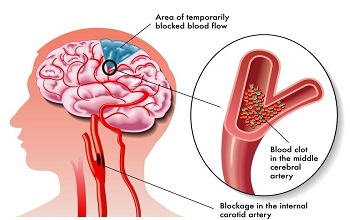
Ischemic strokes are responsible for 80% to 90% of the strokes. These Ischemic strokes are caused by the clots which reduce or stop the blood flow to the brain. These clots may be able to develop elsewhere in the body and can circulate to become hurdles in blood vessels in the brain or the cloth might be originated in the brain.
Ischemic strokes are most of the time divided into two main subtypes which are Embolic and Thrombotic.
Thrombotic Stroke
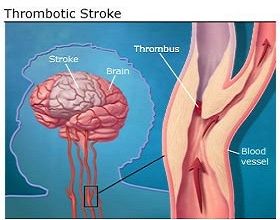
Almost half of the stroke happens are thrombotic strokes. These strokes are caused when the blood clots form in the brain due to some disease or because of the damaged cerebral artery.
Embolic Stroke
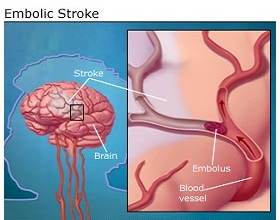
Blood clots can also cause the embolic stroke. In this case of embolic stroke, blood clots start build in an artery outside of the brain. Sometimes these clots start to build in the heart and travel until they build in an artery of the brain. The physical and neurological damage of embolic strokes can cause immediately.
-
Hemorrhagic Stroke:-
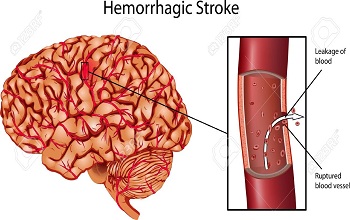
In this stroke brain breaks open and blood starts flowing into the brain under the immense pressure. It compressing the other blood vessel which causes damage to brain cells and patient dies due to this. It is very difficult to stop this bleeding into the brain and it can be very dangerous.
Two main types of hemorrhagic strokes are Intracerebral and Subarachnoid.
Intracerebral Stroke
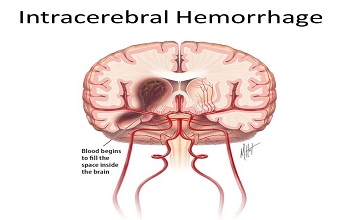
Meaning of intracerebral stroke is “within the brain”. This stroke happens by diseased blood vessels which bursting within the brain. Intracerebral stroke are mostly happened due to high blood pressure.
Subarachnoid Stroke
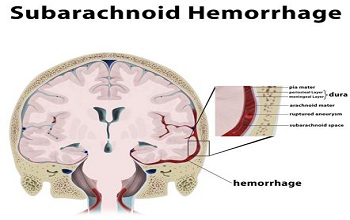
Subarachnoid Stroke refers to the immediate bleeding surrounding the brain in the area of the head is call the Subarachnoid Stroke. The main symptoms of the Subarachnoid Stroke are a sudden severe headache, feeling of snapping or popping. There are a few other factors which can cause subarachnoid strokes including blood thinners, bleeding disorders, head injury and bleeding from the tangle of blood vessels which is known as an arteriovenous malformation.
Click here to read:- Symptoms and 10 Home Remedies of Food Poisoning
Mini Stroke (T.I.A – Transient Ischemic Attack)
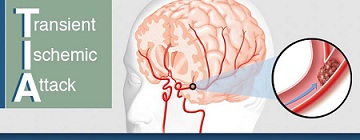
Mini-strokes are temporary blockages of the blood vessels in the brain. T.I.A – Transient Ischemic Attack can produce mild stroke symptoms which can resolve. TIA’s often occurs before a stroke happens. It serves as a warning sign that the person might need a stroke preventive treatment or therapy.
Symptoms of Mini Stroke (T.I.A – Transient Ischemic Attack) are Weakness, Paralysis, Vision Loss, Confusion, lethargy, Facial drop.
Treatment of Mini Stroke (T.I.A – Transient Ischemic Attack)
Treatment for min stroke might include changes in lifestyle, medication, and possible surgery to reduce the chances of another stroke occurring.
What are the causes of Stroke?
Some common causes of stroke come from blood vessels from both sides of the brain i.e outside and inside the brain. Atherosclerosis (hardening of the arteries) can occur when plaque (deposits of calcium, cholesterol, fat, and other substances) builds up and narrows the vessel. This makes easy for clots to form and further occlude into the vessel. These clots can break free only to occlude the smaller vessels inside the brain. These blood vessels which are inside the brain itself can accumulate this plaque. Occasionally, only weakened vessels can burst and start bleeding into the brain.
Prevention from Stroke:- Managing the Medical Conditions
A common condition which increases the risk of the patient includes elevated cholesterol levels, obesity, high blood pressure, and diabetes. People can reduce or stops the risk of stroke by addressing these problems.
Change in Lifestyle
People can reduce their stroke risks by doing some changes in their lifestyle. For example, people can start doing regular exercise, can start reducing or by stopping drinking alcohol. 5-7 drinks are enough for men’s per week and 2-3 drinks are enough for women’s. If you smoking, for god sake stop smoking as it can reduce your chances of stroke.
Prevention from Stroke:- Diet
Change in the diet is one of the best to reduce stroke and live a happy life. Stop eating high calories, fatty food, and oily food as it creates high blood pressure which can cause the problem of stroke. Adding more salt to food can also increase blood pressure. Reduce calories in food can helps in reducing obesity. Add more vegetables, whole grain, fruits, and more fish but less meat especially the red meat in your diet. It helps in lesser the risk of stroke.
Stroke:- Uncontrollable Risk factors
Unfortunately, there are lots of risk factors which people cannot control, such as gender, because men’s are more likely to have an attack of stroke and Family history of strokes which you cannot control. One more thing to add, those women’s who gets the stroke attack is having more chances to die from this rather than men’s.
Click here to read:- 10 Natural Home Remedies for the Treatment of Jaundice
Stroke Treatment:- Emergency
Emergency stroke treatment depends on the type of stroke attack and the underlying health of the patient. Ischemic strokes are treated by the methods which are designed to remove (dissolve) or bypass a clot in the brain. On the other side, hemorrhagic strokes are treated by attempts to stop the bleeding in the brain, reduce brain swelling and control high blood pressure. Hemorrhagic strokes are more difficult than these attacks to treat.
Aspirin
Aspirin is a part of a group or drugs called Antiplatelet agents. Antiplatelet agents like aspirin help to prevent blood cells fragments from sticking together forming the clots which are helpful at preventing some particular forms of stroke. The American Heart Association recommends taking aspirin within the two days of an ischemic stroke which helps in reducing the stroke’s severity. Doctors also recommend the aspirin to that patient who have had a mini-stroke.
TPA – Tissue Plasminogen Activator
TPA – Tissue Plasminogen Activator can be used to treat the ischemic strokes. It is given through the arm of the patient as an IV. It helps n dissolving the blood clots and helps in improving blood flow area of the brain which is blocked by the clots. TPA also very helpful it is taken within the three hours of the time of a stroke taking place.
Recovery from Stroke Attack
Long-term strokes are usually severe and sometimes not treated because of a large section of the brain which might be damaged or killed. These types of damages depends on where the brain stroke occurs. For example- the motor cortex for movement problems or brain area which controls the speech. Although sometimes the problem will be permanent, many peoples who do rehabilitation can regain some of them, or any of the abilities which are lost in the stroke attack.
Stroke:- Speech Therapy
If a stroke damages the ability of the person to use language and to swallow or speak, then the speech therapists in the rehabilitation center can help the patient to regain some or most of the abilities which are lost initially with the stroke. For those who are suffering from severe damage, doctors in the rehabilitation center can teach those methods and skills which can help a person to adapt and compensate from the severe damages.
Stroke:- Physical Therapy
Physical therapy is designed which improves the strength of the person, balance and gross coordination. This therapy helps the people after the stroke to regain their ability in walking again and to do other things like stair climbing and to getting out of the chair. It also helps in regaining the motoring skills again like using a knife, buttoning your shirt or writing something are the activities which patient can recover by doing physical therapy.
Stroke:- Talking Therapy
It is very difficult for peoples in copying their new disabilities after a stroke attack. It is very common for patients to have emotional reactions after a stroke. Any mental health professional or a psychologist can help the patient to accept the new situations and challenges. These professional doctors or psychologists using talking therapy and some other methods which helpsthe patient with reactions such as fear, grief, depression, worries, and anger.
Click here to read:- Top 10 Natural Home Remedies to Control and Cure Dandruff
Prevention from another Stroke:- Lifestyle
This method is already written before in this article may decrease or prevent a person’s stroke risk are essentially the same for the people who had a stroke before (or TIA- Transient Ischemic Attack) and want to decrease or prevent their chances of having another stroke. In Short, decrease the quantity of alcohol, quit smoking, start exercise, and if obese than you should lose some weight. Reduce these four white poisons in your diet- salt, sugar, white rice, white flour. Make habit of eating more fruits and vegetables especially in the dinner. You can eat eggs, whole grain, and fish but avoid red meat especially the fried one.
Side Effects of Prescribed Medications
Medicines are prescribed to those patients who have a high risk of stroke. These medicines are designed to lower the risk by inhibiting clot formation. Medicines are used in this are warfarin, aspirin or antiplatelet. Also, in some cases, antihypertensive medications can also help the patient by reducing high blood pressure. These medicines have some side effects, so it is better to consult the doctor properly before taking.
Prevention from another Stroke:- Surgery
There are also some surgical options available for stroke prevention. Some patients are having plaque-narrowed carotid arteries. This plaque can participate in the formation of a clot in the artery and also can shed slots to the others areas in the brain’s vessels. Carotid endarterectomy is a surgical procedure in which the surgeon removes the plaque from an inside of the arteries to reduce the chances of strokes in the near future again.
Prevention from another Stroke:- Balloon and Stent
Some doctors or medical centers also treat the plaque-narrowed carotid with a balloon on the end of a narrow catheter. By inflating the balloon it pushes the plaque aside and increases vessels lumen/ opens up the vessel. Then this opened artery is kept open by an expandable stent when it expanded, becomes rigid.
Life after a Stroke Attack
Around 700,000 people suffer from stroke attack every year, two-thirds of the total survives and usually need some type of rehabilitation. Some patients who get clot-busting drugs may recover from this problem completely, but others not. Lots of peoples who have a disability after a stroke are using various types of therapy and rehabilitation methods. It helps them to recover from the problem as they recover functioning capacity again. However, there is a higher increase in the risk of the second stroke after the first stroke attack. So the patients can take the particular steps which are already mentioned in this article.
Click here to read:- 10 Effective Home Remedies for Removing Blackheads
What are the long-term effects on the body after having a stroke?
The extent and type of disability caused by a stroke vary patient to patients. It depends on the extent of the damage to the brain.
A large stroke attack can cause death while a small stroke attack may cause only minor problems, which can/may go completely over the time. In most of the cases, the effects are somewhere in between these two extremes types.
Sort of problems occur because of this, one or more are written below:-
There are various problems happens while balancing and coordination with the body.
Weakness in the one side of the body:-
A problem of weakness can happen while walking and with hands and arm too while working.
Swallowing is also a common problem:-
In some cases, this can be very dangerous, as in this food may go down to the windpipe rather than going down the gullet when you eat. Because of this, doctors do the swallow test on almost all the patients who are suffering or suffered from stroke attack. This test makes sure that the patient can swallow easily or not. If doctors see that there is a severe difficulty with the swallowing then doctor suggest to have food or drinks pass in your stomach through a tube.
Difficulties in Speaking and Communication:-
During this problem, it is very difficult to find the correct words to say in the middle of the sentence to be completely unable to speak. Also, the patient suffers from understanding the writing, reading and speech may be affected.
A Difficulty with the Vision:-
If a part of the brain which deals with the vision is affected then problems can arise. For example, few people who have a stroke before having double vision and some people losing half of their field vision.
Click Here to Read:- Did You Know These 10 Natural Home Remedies for Knee and Joint Pain
A Difficulty with the Mental Processes:-
Those people are suffering from a stroke attack can find difficulties in concentrating, remembering and learning etc. Those affected by stroke attack, sometimes suddenly start crying and sometimes start laughing without any reason.
Feeling Tiredness:-
The above written is just a few examples of what occurs following a stroke. Let me clear that every stroke is different and the difficulties and problems have to checked and assessed for each affected person differently. In the first couple of weeks after a stroke, the inflammation and swelling around the damaged brain tissues settle down. Some of the symptoms in that time may improve. With proper appropriate therapy and rehabilitation, there may be a slight improvement.
From 3 out of 10 patients who survive a stroke live independent within three- four weeks. The number rises from 3 to 5 out 10 after 6 months. Sometimes there a degree of visibility remains the same which is common in stroke patients.
Is there any test needed?
A doctor can normally diagnose a stroke by knowing the signs and symptoms which starts developing in patient suddenly. Doctors doing below written few tests to check the symptoms and those tests are:-
MRI Scan or CT Scan:-
By doing these tests a doctor can check whether it is a hemorrhagic stroke or ischemic stroke attack. by doing these tests doctor can detect the condition of the patient by which may have caused a stroke attack or mimic stroke.
Blood Tests:-
By doing blood tests doctor can check the level or blood sugar and cholesterol level. High level of these tests shows the increased risk of stroke attack.
Heart tracing i.e ECG and Ultrasound Scan:-
These tests are done to check the condition of lungs and heart which can be a cause of the Atrial Fibrillation stroke attack
Ultrasound Scan:-
This test checks the large patches of atheroma in the carotid blood vessels or says in the arteries.
Click here to read:- 8 Amazing Health Benefits of Dates for Skin, Bones and Health
Is there any way to prevent from stroke?
There are certain ways which increase the chances of a stroke attack. Reducing the risk factors can help in reducing the risk of stroke attack. I am going to write those risk factors briefly below:-
Smoking:-
Smoking is always at the top of the high risk of life and dangerous diseases. If you are smoking, it is better for you to quit smoking right now. Those chemicals which are used in tobacco stuck in your bloodstream which can damage your arteries easily.
Alcohol:-
Those peoples drinking more than 12 units of alcohol in a week are on high risk of stroke attach. It is good for you if you reduce your units from 12 to 4-6 in a week. Take a gap of 1-2 days between 2 units.
Diabetes:-
Life is very difficult for those who are suffering from diabetes. If you are suffering from diabetes it is better for you to take proper treatment of this disease. As treatments help your blood sugar to come near to normal as possible this is very important. Avoid eating bakery products, sugar, salt, oily and fried foods. Add more vegetables and fruits in your diet.
High Blood Pressure:-
Visit the doctor on regular basis and always go for a blood pressure test too. If you find blood pressure is normal than it is good. But if you find high blood pressure, then it is good for you to take the necessary treatment to control the BP. Treatment of blood pressure put a great effect on your body which helps in reducing the risk of stroke. High blood pressure normally not creates and any problem but sometimes it can damage the arteries.
Inactivity/No Workout:-
If you are not doing any type of physical workout or exercise and doing the sitting job. It is a sign of danger for you as you are just consuming calories and not letting them out from your body. It is better to start doing walking, running or other physical activities early in the morning or whatever time to like. By doing physical activities you can remove lots of toxins from your body. And it will help you to live healthily.
Click here to read:- 10 Natural Home Remedies for Acne Pimple Treatment
Diet:-
You should not live for food; you should eat food for living only. Always take proper healthy diet for a healthy life.
You should eat fruits and vegetables on regular basis.
Avoid eating fatty food, oily food, fried food, and red meat.
Reduce the quantity of cheese, butter and full cream milk etc.
Always use low fat, poly saturated or mono spreads only.
Try to eat 1-2 portions of fish weekly.
If you still want to eat red meat, it is better to eat lean red meat or poultry meat i.e chicken.
Avoid adding salt in a salad. Start consuming less salt and sugar in diet especially in the dinner.
So, friends, this is the whole article about stroke. I am sure you will gain a lot information about stroke attack. do share on your social accounts, it can help lots of people from this problem.
Thanks….

